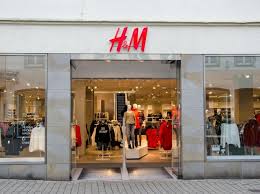Hennes & Mauritz AB, or H&M, is one of the biggest and most powerful fashion retailers in the world. Founded in 1947 in Västerås, Sweden, by Erling Persson, the company began as a small women’s clothing store and has since grown into a global giant in fast fashion. Today, this retailer boasts over 4,500 stores across more than 70 countries, which is synonymous with affordable trendy clothing for everyone of all ages.
A Brief History of H&M
H&M was started off by its first store, “Hennes,” which in Swedish translates to “hers,” catering solely to women’s fashion. It was 1968 when it acquired Mauritz Widforss, a menswear retailer. This purchase increased the offerings to include menswear, and from then on, the brand took on the name Hennes & Mauritz.
Over the years, it has grown in such a way that it is able to change with the market needs while maintaining its core mission of offering fashion and quality at the best price. Its business model, which is fast fashion, enables it to bring runway-inspired designs to stores within weeks, making it different from its competitors.

Global Expansion of H&M
H&M had opened its first store outside of Scandinavia in London in 1976. Throughout the 1990s, it entered the U.S. market and started consolidating itself within North America. In the 2000s, expansion was made within Asia, through flagship stores across cities like Tokyo, Beijing, and Mumbai. Currently, “hennes & mauritz” has diversified brands such as COS, Monki, & Other Stories, and Arket catering to specific fashion market segments.
Commitment to Sustainability
As a fast fashion leader, H&M has been under scrutiny for its environmental impact. In response, the company has made significant strides toward sustainability. The “Conscious Collection” was launched in 2010, which marked a milestone in offering eco-friendly clothing made from organic and recycled materials.
“hennes & mauritz” has also set ambitious goals, such as becoming climate-positive by 2040 and using 100% sustainable or recycled materials by 2030. Initiatives like garment recycling programs and collaborations with organizations like the Ellen MacArthur Foundation show its commitment to reducing textile waste.
However, the critics argue that sustainability efforts from the brand are masked by its gigantic scale. The debate around “greenwashing” continues with activists urging “hennes & mauritz” to think of quality rather than quantity and slow down production cycles.
Digital Transformation

This impacts it in embracing technology and changing the customer experience, making operations more efficient. The e-commerce platform launched by the brand in the early 2000s has emerged as a huge revenue stream generator. The use of mobile apps, AI-based recommendation, and virtual fitting rooms constitute but a few examples of its efforts to lead the industry.
Social media has also played a crucial role in “hennes & mauritz”’s marketing strategy. Platforms like Instagram and TikTok enable the brand to connect with younger audiences through influencer collaborations, user-generated content, and interactive campaigns.
Challenges and Criticisms
Despite its success, it faces challenges faces that threaten its market dominance. The rise of ultra-fast fashion brands like Shein and Boohoo has intensified competition, particularly among Gen Z consumers seeking affordable, trend-driven clothing.
Another major issue is labor practice ethics within its supply chain. Reports have surfaced about substandard working conditions in factories and low wages paid to garment workers. It has promised to make its supply chain more transparent and ensure fair labor practices, but progress has been slow and patchy.
Future of H&M
Looking ahead, sustainability and profitability are going to be the key issues for H&M. As the consumers become increasingly aware of the environmental and social impact of their purchases, the brand needs to innovate to meet these expectations without compromising its core appeal of affordability and style.
Investments in circular design, renewable power, and in digital advancements likely to shape this trajectory. But collaborations with other designers, artists, and leading sustainability pioneers for H&M will determine its relevance into the future rapidly changing industry as well.

Conclusion:
H&M’s journey from a small Swedish store to a global fashion giant is a testament to its adaptability and vision. While challenges remain, the brand’s commitment to innovation and sustainability offers hope for a future where fashion can thrive responsibly. As H&M continues to evolve, its influence on the industry and its role in shaping consumer behavior will remain unparalleled.
